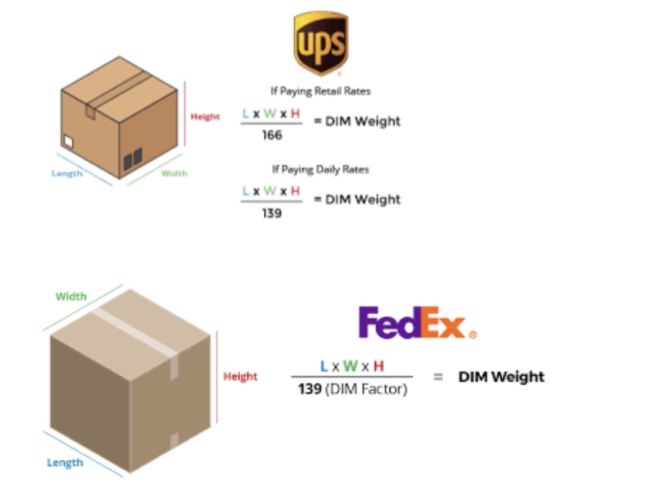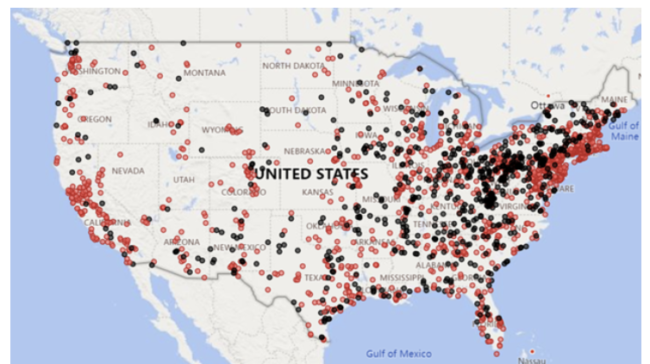Shipping costs should be simple right? You place your packed box on the scale, enter the customer’s address, and get a price from the shipping software. The package is then tendered to the carrier and a happy customer awaits the delivery 😊. A few weeks later you are reconciling your billing statement from the carrier, and you start seeing all of these billing adjustments that you were not expecting.
Suddenly, the margins on your hard-earned eCommerce sales are eroding. Sound familiar? It shouldn’t because billing adjustments on shipping charges are an ongoing problem that affects all online merchants regardless of their size and/or scope of operations.
There are many different reasons that shipments are accessed additional fees which will result in prices higher than your initial calculated price. We won’t get into all of them in this post, but we will focus on the two of the primary culprits which are Dimensional Weight and Delivery Area Surcharges.
We’ll explain the history behind the creation of both charges by the carriers and provide some tips to either avoid the charges although or adequately capture them so that you can maintain your rightfully earned margins on your eCommerce sales.
The History of Dimensional Weight
Up through 2015, the major shipping carriers made things simple and charged the actual weight of the package for every shipment. However, as eCommerce volumes started to really take off, the carriers realized that they were handling a bunch of lightweight, larger packages that were clogging up their delivery trucks. It was like Southwest Airlines flying an entire plane full of passengers who paid the $49 Wanna Get Away! rate.
The theory is similar in both cases in that you don’t want a bunch of empty seats on your aircraft but a plane full of money-losing tickets (or packages in our case) defeats the purpose. The solution that the shipping carriers FedEx and UPS created to solve the problem is called dimensional weight and is a mathematical equation that calculates the volume of a package divided by a “dim factor” that is pre-determined by the carriers.
Here is the step-by-step process to calculate a package’s dimensional weight:
- Measure the length, width, and height of a package, using the longest point on each side.
- Next, multiply those dimensions to get the cubic size of the package.
- Divide the cubic size by your carrier’s DIM divisor.
Note: FedEx’s DIM divisor is 139 for Ground Services. UPS’s DIM divisor is 139 for daily packages and 166 for retail packages.

FedEx DIM Weight Example:
Box Size: 12’ x 12’ x 8’ = 1,152’ / 139 = 8.29lbs which rounds up to 9lbs
Package Actual Weight: 5lbs
Shipping Cost Difference (Zone 7): Actual Weight – $10.00 v. Dim Weight – $13.00 (est. example)
How a 3PL Can Help with DIM Weight Charges
In the example above, the retailer would be paying the DIM weight price of $13.00 for the package rather than the actual weight price of $10.00. This higher price would be known at the time of shipping but only if you input the correct box dimensions.
Shortcutting the process and entering in generic dimensions of 1x1x1 will trick you into thinking that you are paying the $10.00 rate and then getting the billing adjustment on your next carrier statement. FedEx and UPS both utilize cutting-edge laser measuring technology at their sorting facilities that capture the actual dimensions of every package that passes through their networks.
How can a fulfillment warehouse help in reducing dimensional weight charges? The primary way is that 3PL warehouses like 5 Logistics have higher DIM divisors with the carriers. In some cases, it can be nearly 2x the published retail figure. Having a higher DIM factor results in the majority of your package's shipping at their actual weight.
In our FedEx example above, a DIM factor of 200 would have resulted in the package shipping at 6lbs which is only 1lb higher than the actual weight. The dim divisor for USPS is 166 which is the same for both retail and commercial accounts, so no savings are currently available if you utilize the Post Office to ship your orders.
DIM weight really starts to make a difference on both Express and International shipments where the pricing rises exponentially higher for heavier packages. The difference in weight for a 3lb package versus a 10lb package that ships 2-Day or Overnight can be $10+ rather than the $3 example we illustrated above. Lower margin items that ship in large packages (think popcorn or tea leaves) are also greatly affected by DIM weight so any savings with a higher DIM divisor is pure margin for the online retailer.
Delivery and Extended Area Surcharges
One other key area for eCommerce companies to pay attention to is Delivery Area Surcharges also known as the DAS surcharge. If your company ships to remote or rural destinations, you have probably experienced additional fees being tacked on to your weekly billing statements.
Both UPS and FedEx apply these additional charges to packages either picked up or delivered to certain ZIP codes that are predetermined. In 2020, more than a quarter (26%) of the U.S. population was in a ZIP code that would incur either the Delivery Area or Extended Delivery Area Surcharge. Depending on the carrier and the service level, the surcharge rates can range from $3.00 – $7.50 per package in the contiguous United States.
Both surcharges are defined by a set of more than 25,000 ZIP codes (FedEx List / UPS List). For many shippers, it’s the third-highest surcharge (after fuel and residential) that they incur. Given the now frictionless environment of online commerce, you can’t really control what area of the country your customers and orders come from. Demand for your products is a good thing and a shipment to a zip code with a DAS surcharge is better than no sale at all.
That being said, 3PL warehouses typically have discounts on these surcharges that are then passed along to their customers. In addition to discounts, 3PL’s can utilize best rate shipping algorithms that will shift some shipments from a DAS surcharged carrier to USPS which doesn’t currently assess these fees because of their pre-established rural network that is subsidized by the Government. Some retailers also encourage customers to ship packages to their business addresses. Commercial deliveries typically enjoy lower overall
rates and surcharges in rural communities.

The landscape for DAS delivery charges will likely ease in the coming years as FedEx and UPS continue to build out their residential networks across the country. COVID-19 has greatly accelerated the work from anywhere trend. We now have more savvy online consumers with high disposable incomes living in remote areas across the country than ever.
The increasing volumes to these areas will encourage capital spending by the shipping carriers to keep up with demand and likely shrink the list of zipcodes that are currently on the DAS surcharge list in the coming years.
 5 Logistics
5 Logistics